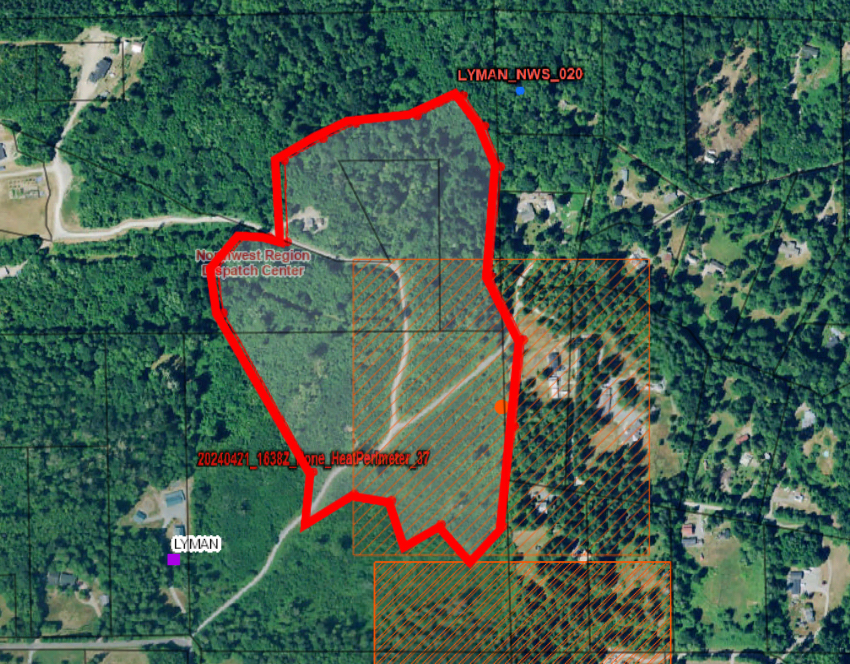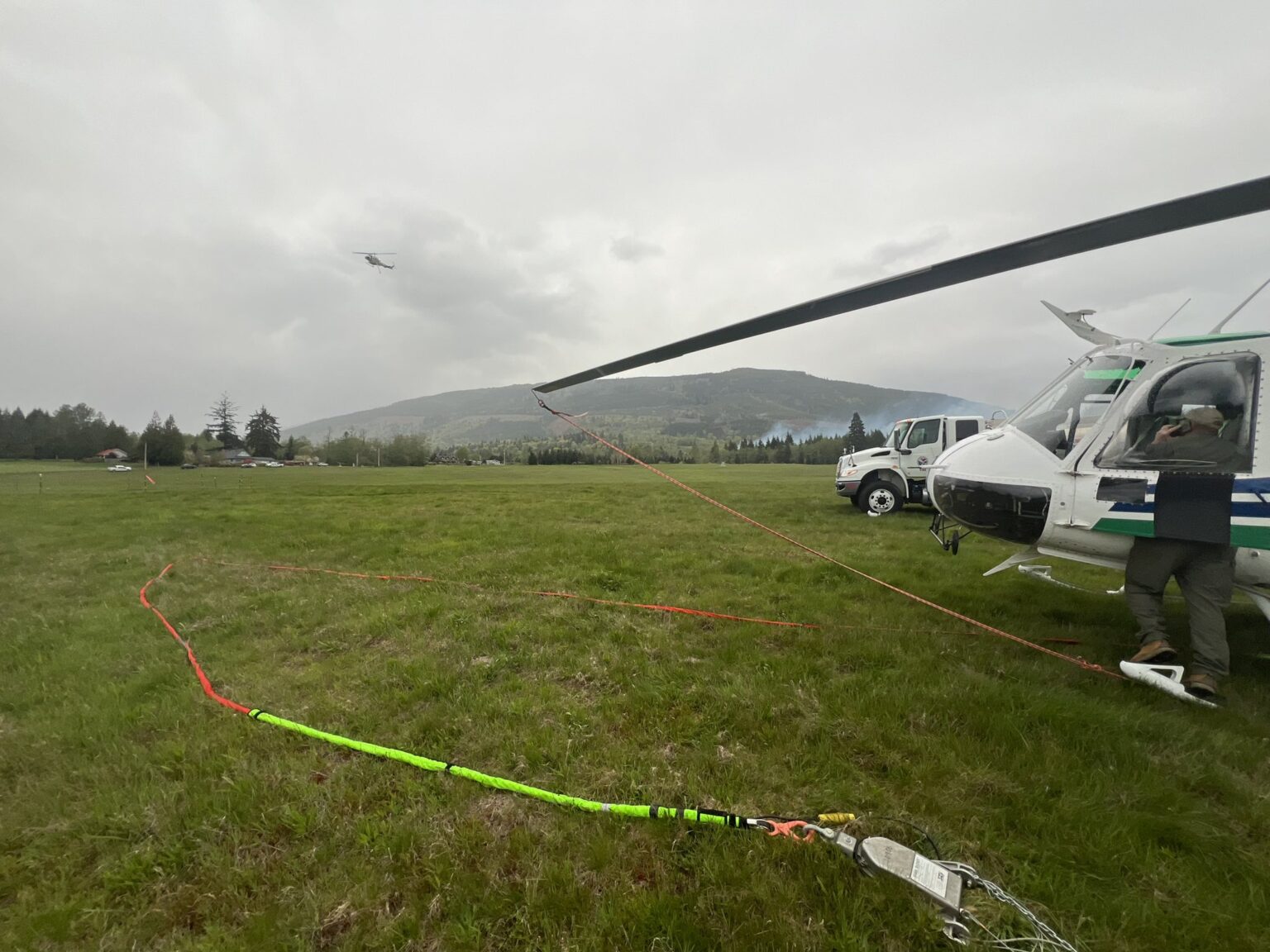Two 30-acre fires over the weekend, one north of Lynden and one off Highway 20 in Lyman, Skagit County, marked an early beginning to wildfire season in the northwest corner, and gave agencies a taste of what’s to come this year.
On Saturday, April 20, high winds exacerbated a brushfire north of Lynden on Bender Road and a fire in forested terrain near Lyman. Residents in the Carpenter and Pipeline Road areas of Lyman were warned they should prepare for evacuation; no evacuations were necessary in Lynden.
North Whatcom Fire and Rescue was the first to respond to the Bender Fire, and soon brought in crews from the Department of Natural Resources because of the speed of the fire, high fuel load, and presence of a house on the property.
The Lynden Fire Department and Whatcom County Fire Districts 7, 14, and 1 provided assistance. The house was unscathed, but one firefighter suffered a foot injury and was transported to St Joseph Medical Center. He’ll make a full recovery, said North Whatcom Fire Chief Jason Van Der Veen.
Fortunately, cooling temperatures and precipitation on Saturday night helped containment efforts, although the approaching cold front shifted the winds in Lynden and pushed the fire toward the Canadian border, forcing Canadian crews to respond and fight it on the northern side.
The fires were mostly contained by Sunday. DNR wildfire communications manager Thomas Kyle-Milward told the Cascadia Daily News on Monday afternoon that the Bender and Lyman fires were both human-caused, although investigations are still pending.

The conflagrations in Whatcom and Skagit counties came only days after the Department of Ecology issued a statewide drought emergency, extending the 2023 drought. However, that announcement was directed toward the agricultural sector, Kyle-Milward clarified.
Fire meteorologists at the DNR are projecting a normal fire season (or at least the “new normal” of the past decade in the Pacific Northwest) rather than an extreme season like that of 2021. It may be an active season but isn’t expected to be “wildly different” from 2023.
“This many months out, we can only do big-picture summaries of what we’re projecting,” he said. “There are variables that can create pockets of fire weather and can lead to those extreme events, and it’s hard to predict those occurrences more than seven to 10 days out, but in general we’re cautiously optimistic.”
But, Kyle-Milward added, the early start to the season was a good reminder for the public to “be vigilant and be aware.” He pointed out that the same behavior that causes a 30-acre fire in April could lead to a fire that covers hundreds of acres and threatens structures in July or August.
“As the weather improves and more people are getting outdoors, we see an increase in human activity on the landscape — people doing yardwork, people recreating — and given that it’s April, people are more relaxed about their behavior,” he said.
Van Der Veen agreed, saying that he can’t stress how important it is for people to be cautious. “If you can feel the wind, it’s probably too windy to burn,” he said.
Of particular concern this year for North Whatcom Fire and Rescue is the Semiahmoo area, which is a wildland urban interface with many homes in dense woodlands. Van Der Veen said he’s accelerating education efforts for those residents and encouraging them to be “fire wise.”
Looking a few months down the road, he hopes for a cool, wet June, because if dry conditions continue the Fourth of July holiday weekend could be dangerously hectic for local firefighters.
“Not to be a killjoy but we’re always overmatched on the Fourth, and if this is what mid-to-late-April is like … things can get out of hand real quickly,” Van Der Veen said.
On April 1, Whatcom County Executive Satpal Sidhu proclaimed May to be Wildfire Awareness Month, “as a means for education and a call for residents of Whatcom County to act to reduce the wildfire threat to their homes and help our community move toward becoming more fire resilient.”
The Division of Emergency Management advises county residents to build their “go kit” to ensure they’re prepared for a wildfire in case of an evacuation due to fire or any other disaster. Residents are also reminded to sign up to receive AlertSense (emergency alert) notifications from the county.
Julia Tellman writes about civic issues and anything else that happens to cross her desk; contact her at juliatellman@cascadiadaily.com.




